Abstract
1. In order to evaluate the membrane potentials calculated from the distribution of chloride ions in human red cells and plasma, it is desirable to have a direct measurement of the transmembrane potential of these cells.
2. A method has been devised for introducing a capillary micro-electrode into human red cells. The method allows simultaneous measurements of potential and membrane resistance with only one micro-electrode located in the cell.
3. Upon impalement of single cells in plasma, a scatter of membrane potentials and of resistance values was obtained. The potential drop never exceeded -14 mV and the maximum resistances were about 7 Ω. cm2. Positive potentials were obtained on impalement of red cell aggregates.
4. Arguments are given to support the view that it is in these cells which suffer least damage from the impalement that maximum values of membrane potentials and resistances are observed. The errors caused by the change in the liquid junction during the impalement have been estimated.
5. As judged from this study, it seems permissible under normal conditions to calculate the membrane potential of the red cell from the chloride concentrations in plasma and in intracellular water.
Full text
PDF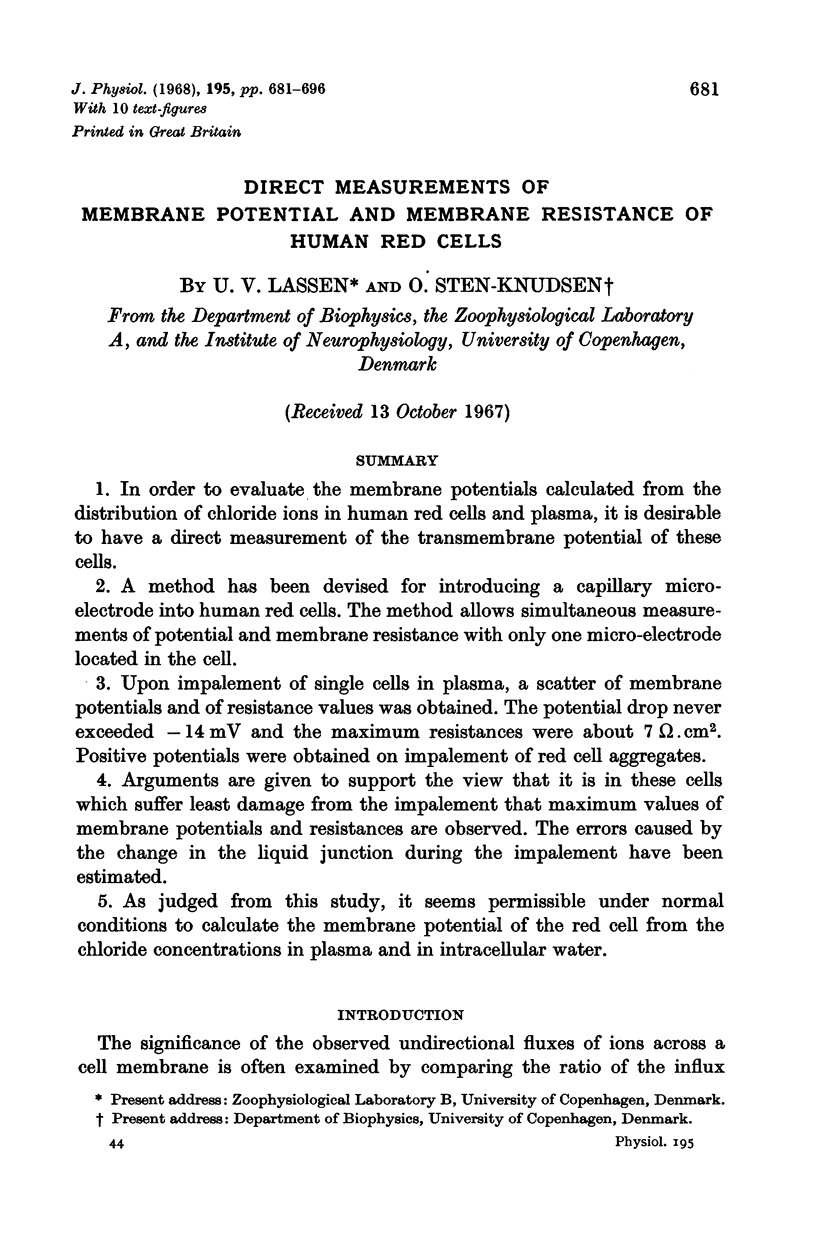
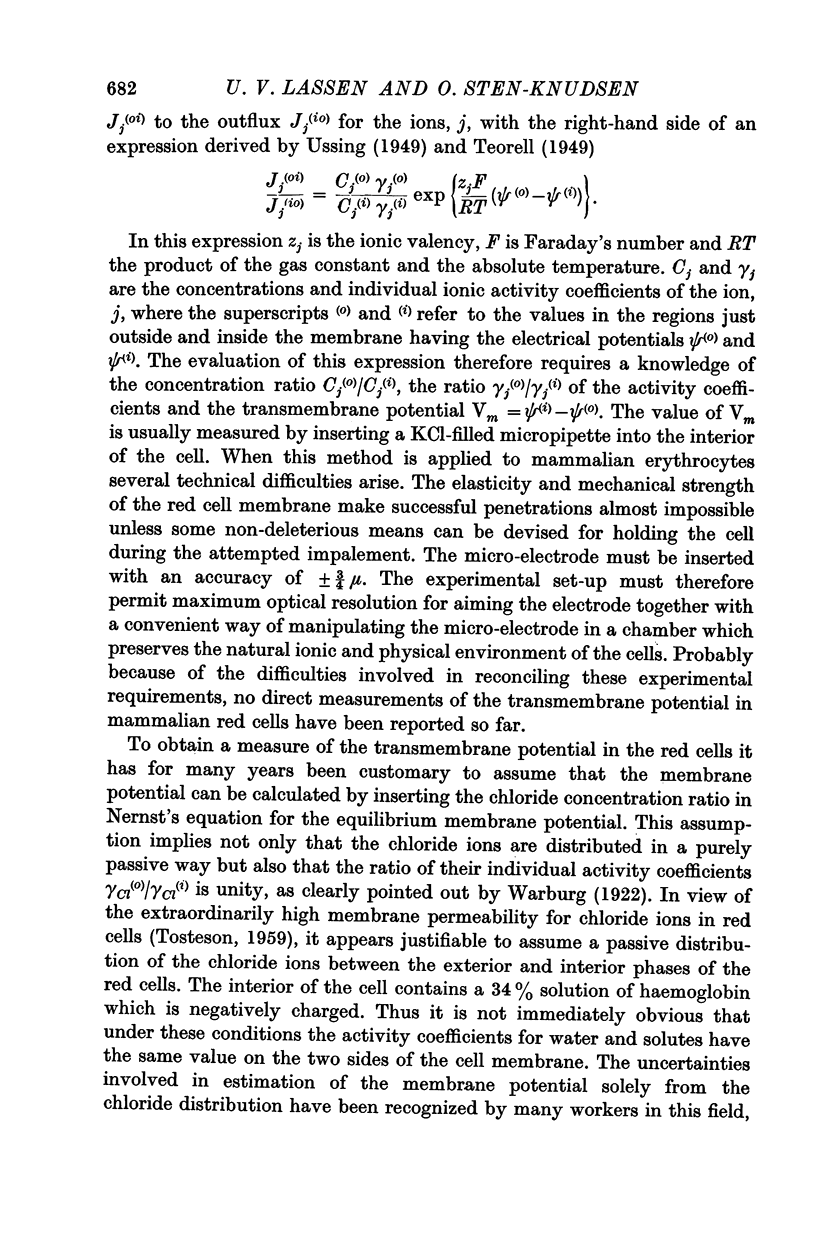
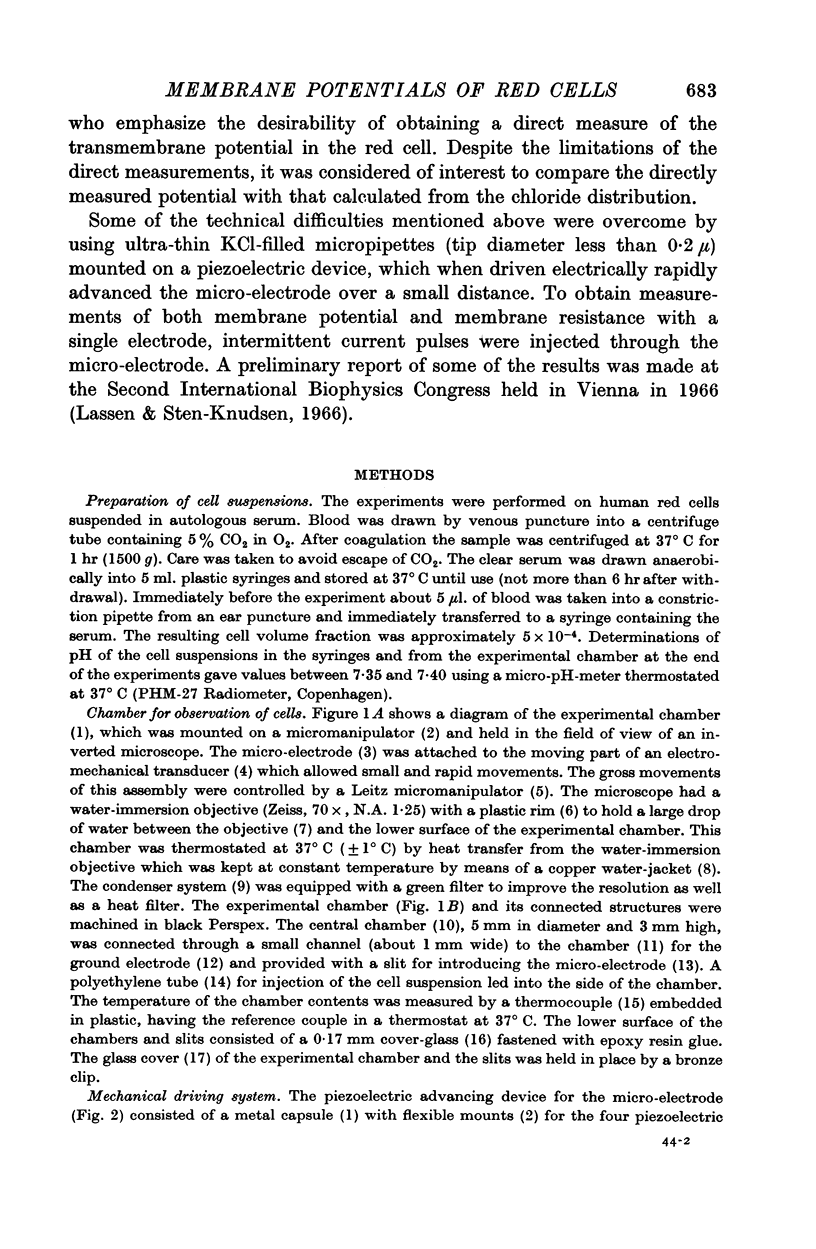
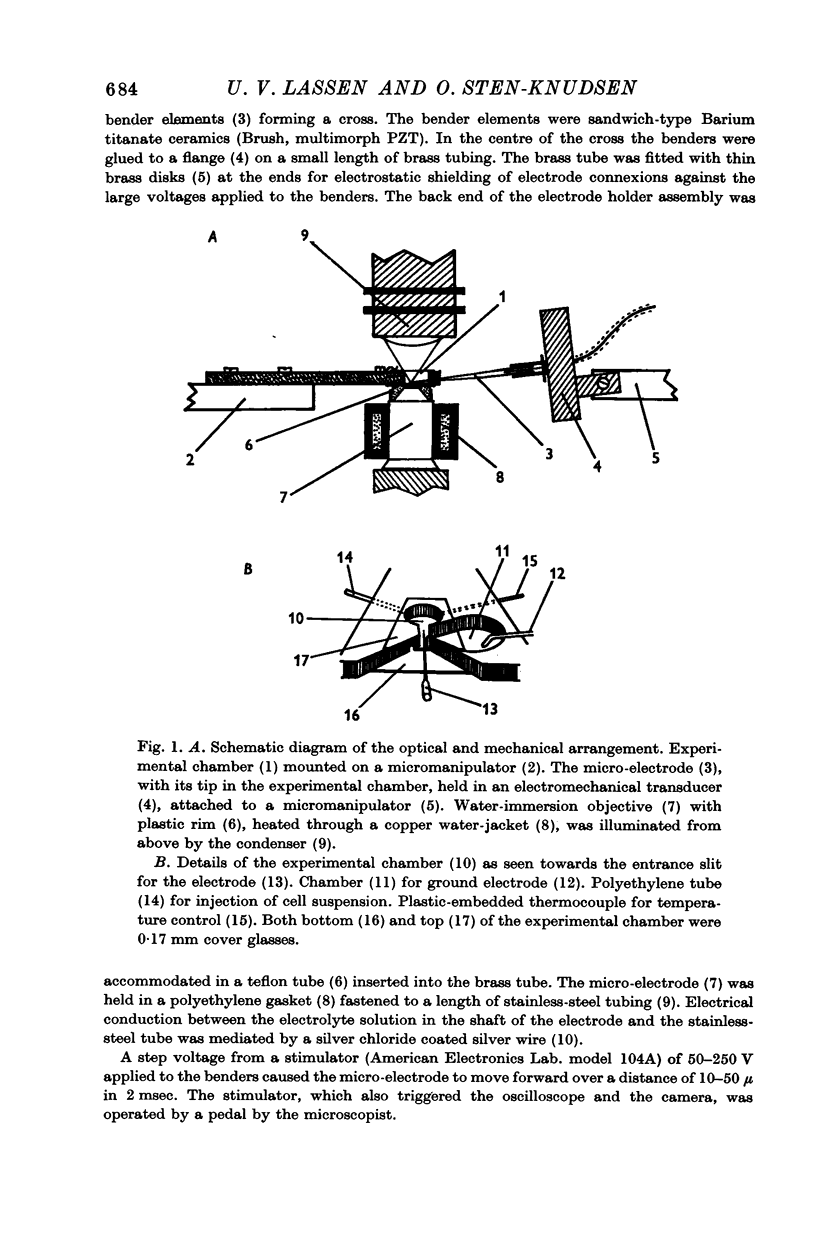
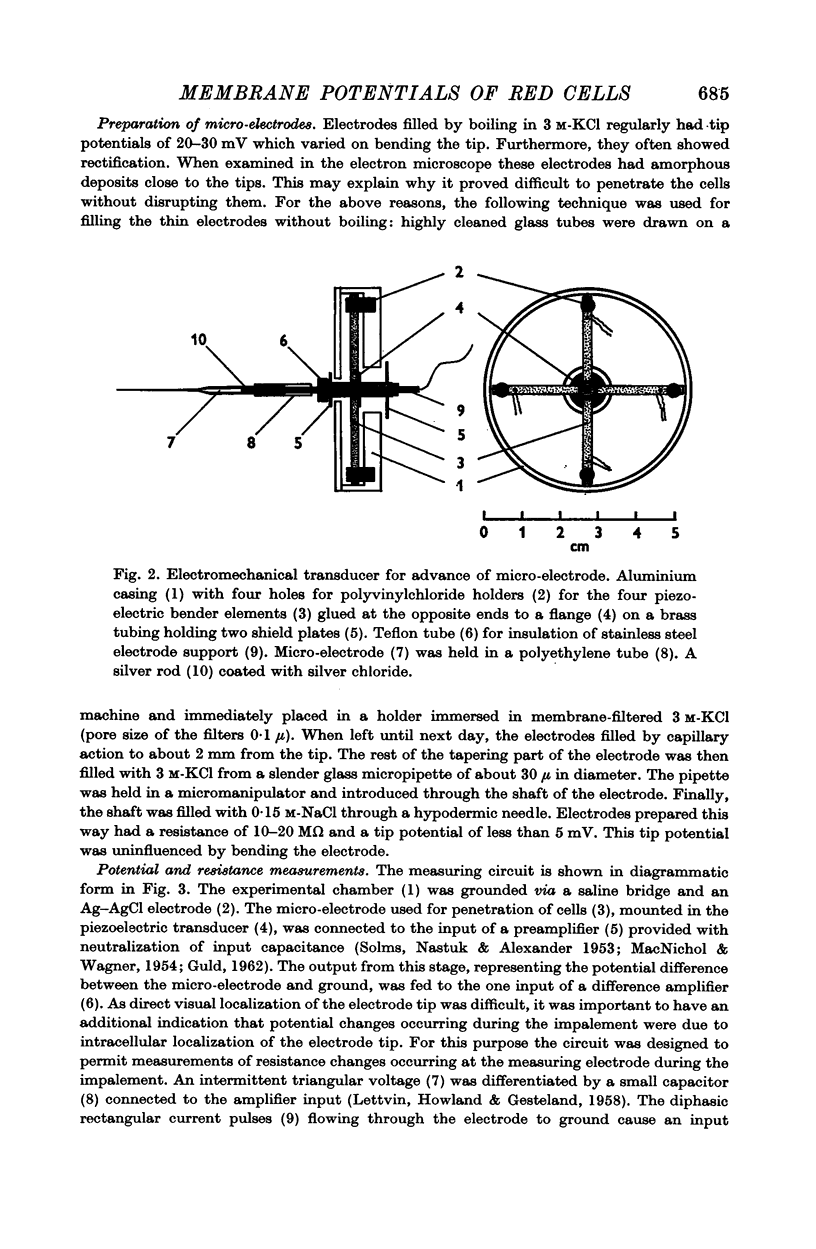
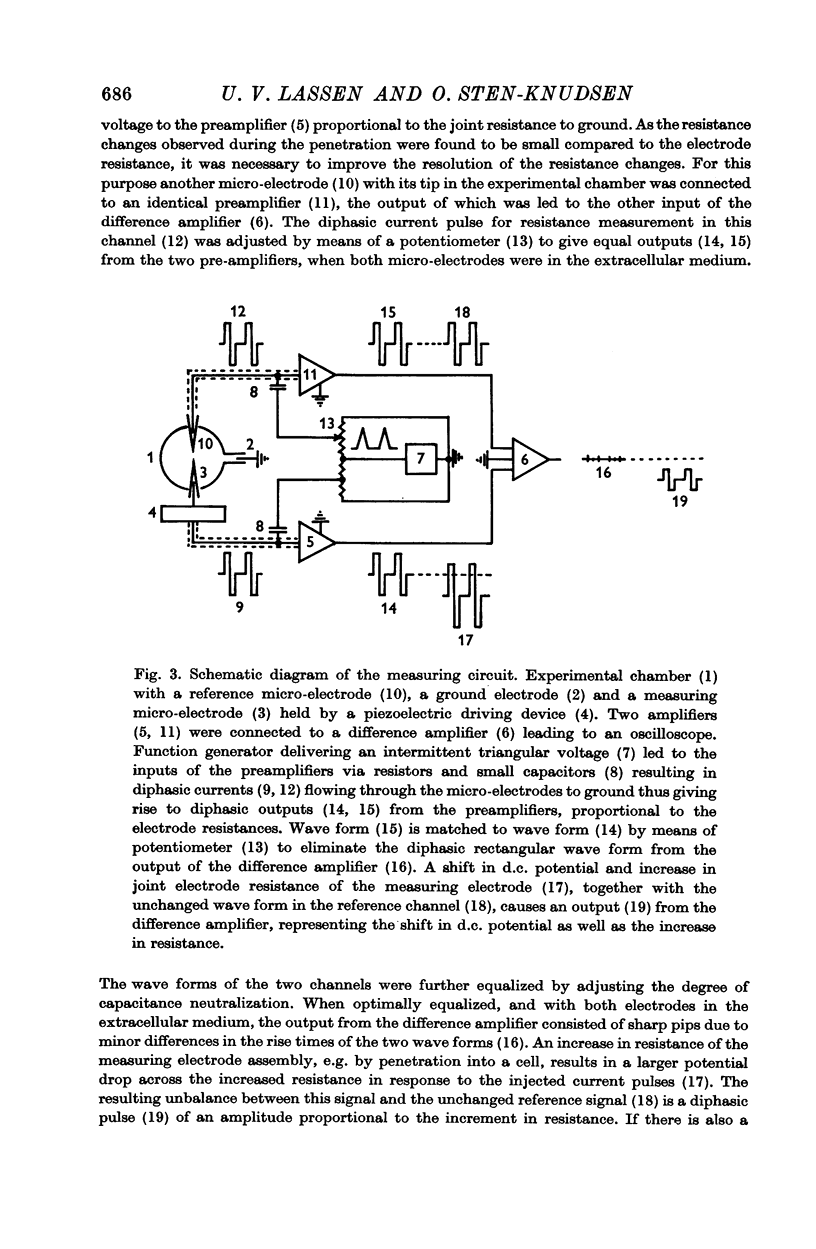
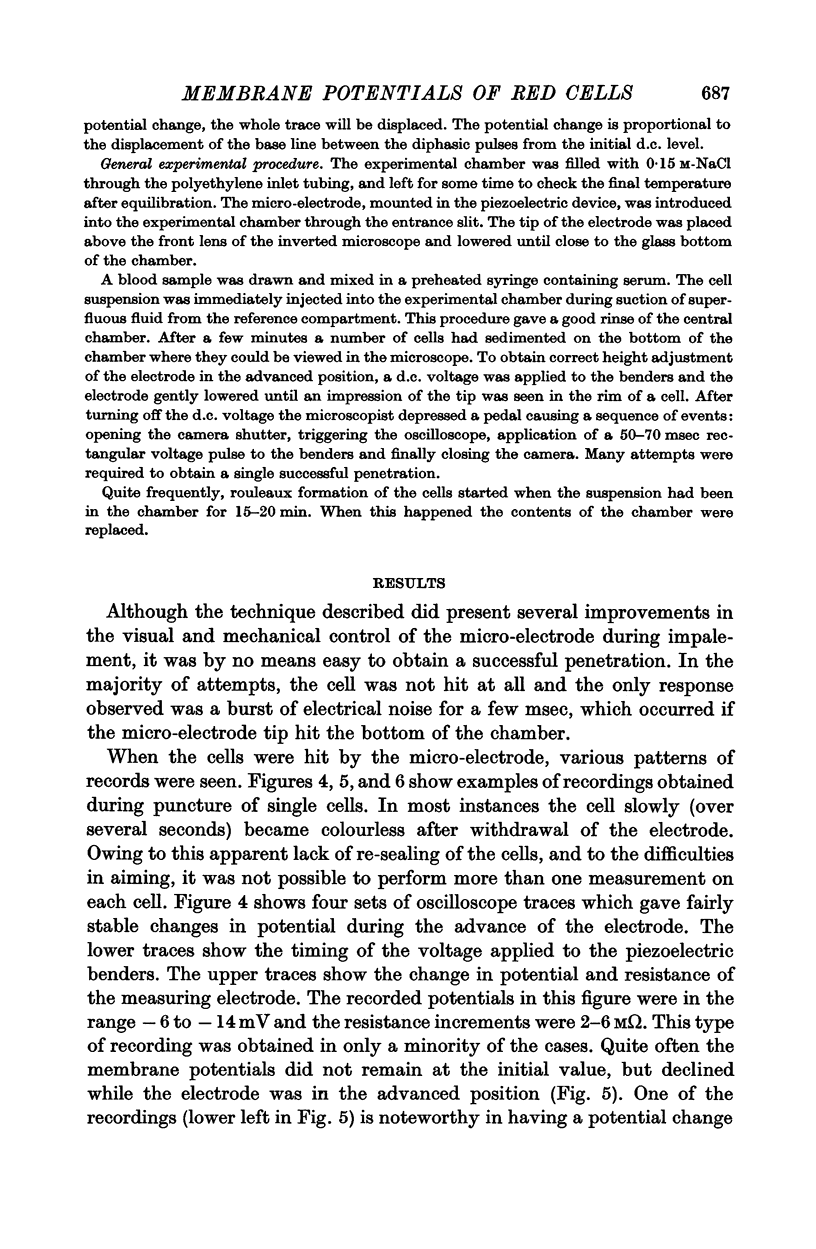
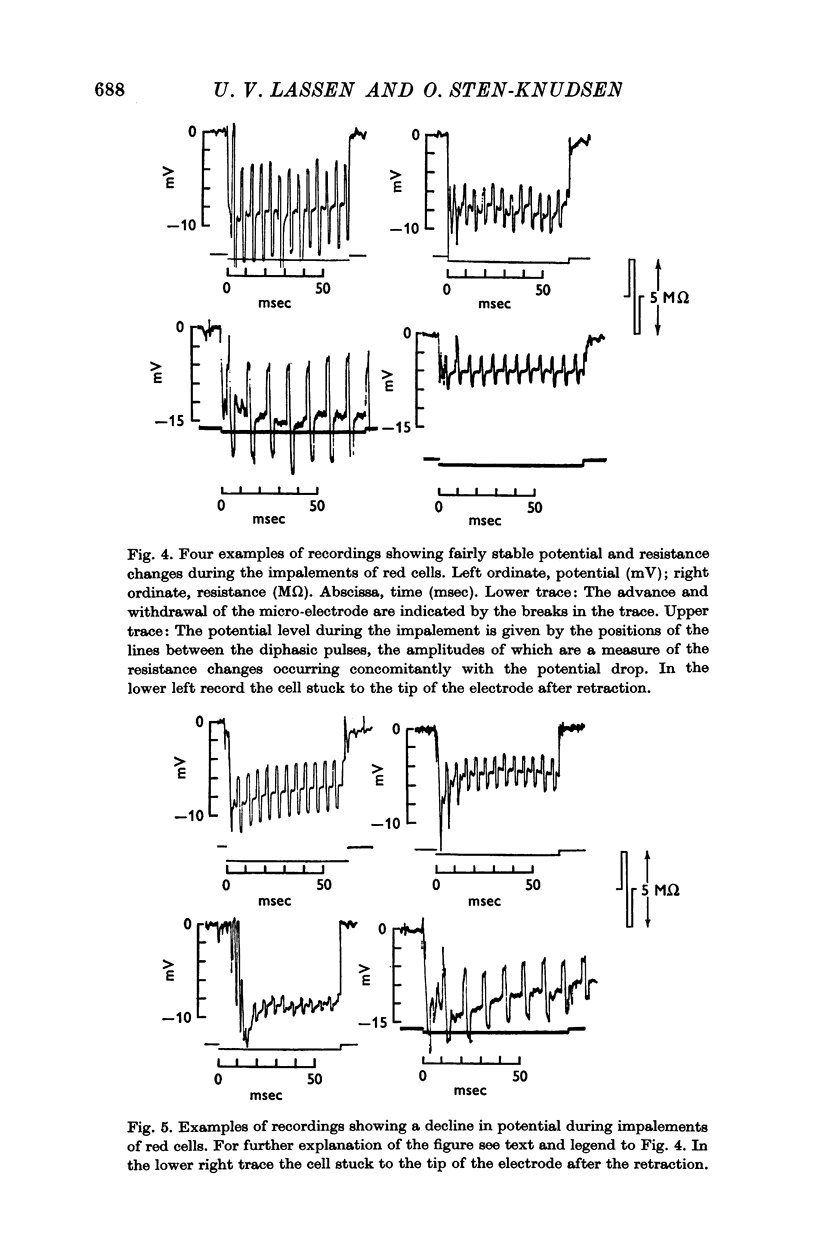
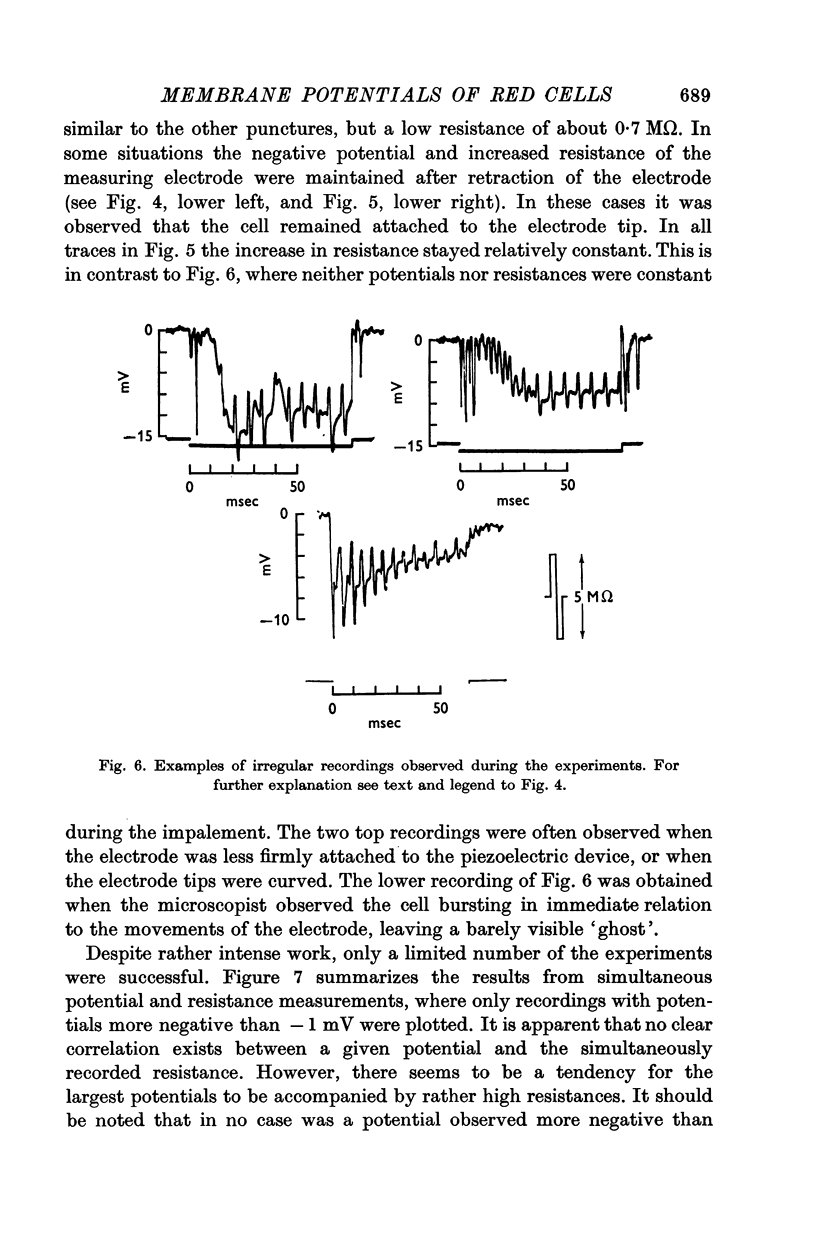
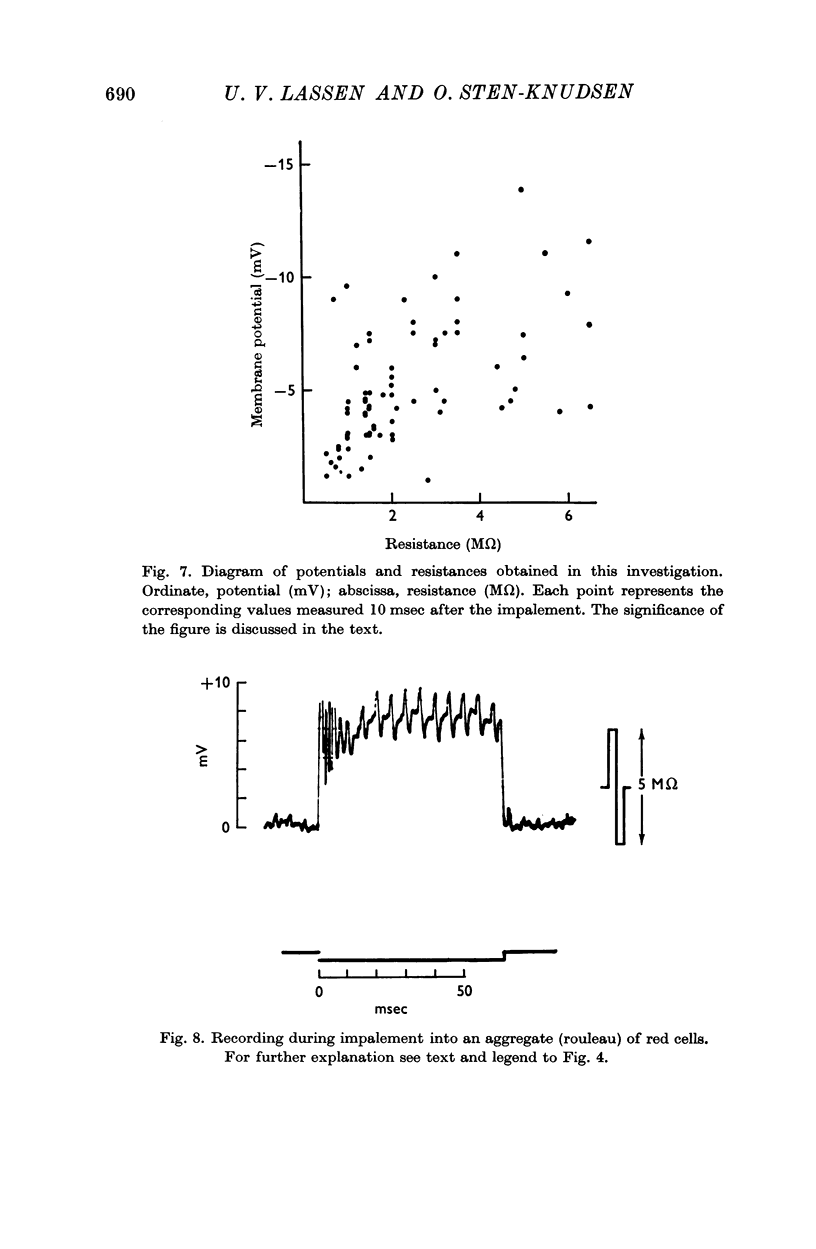
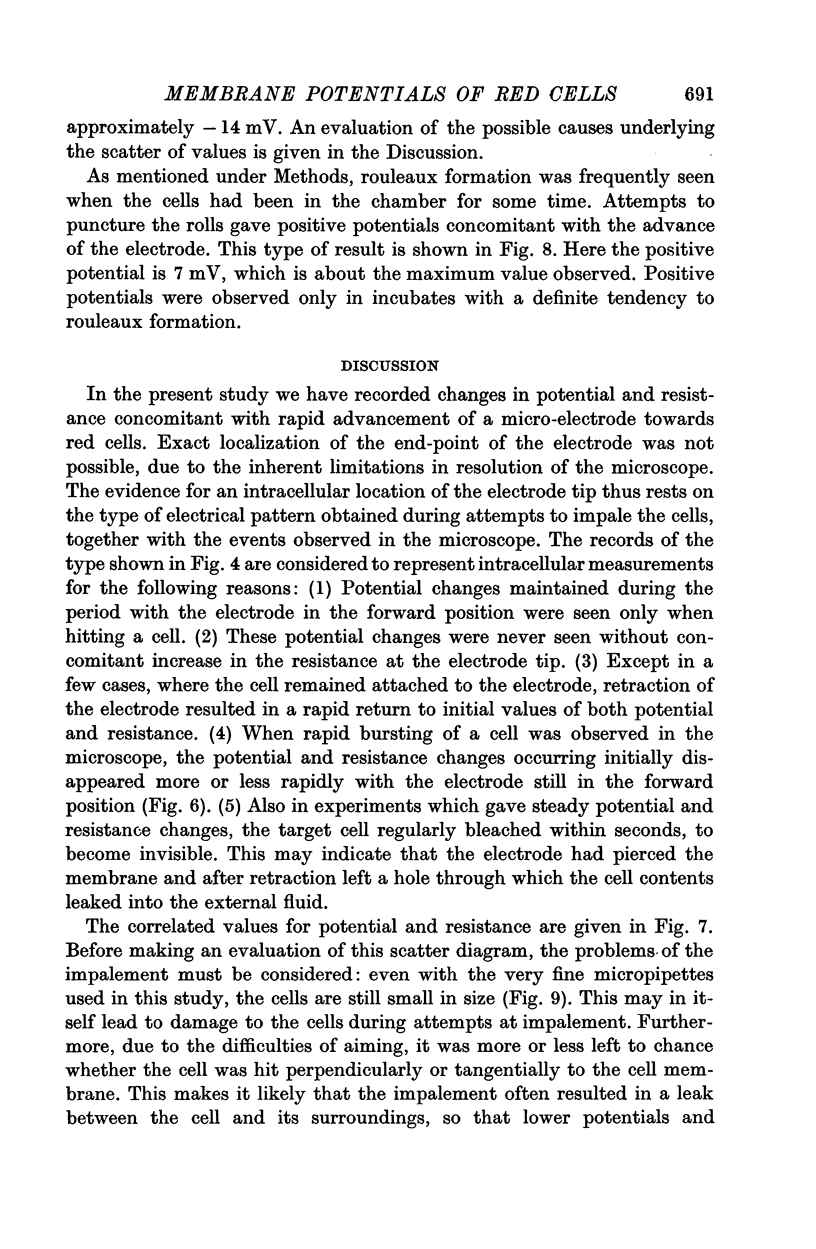
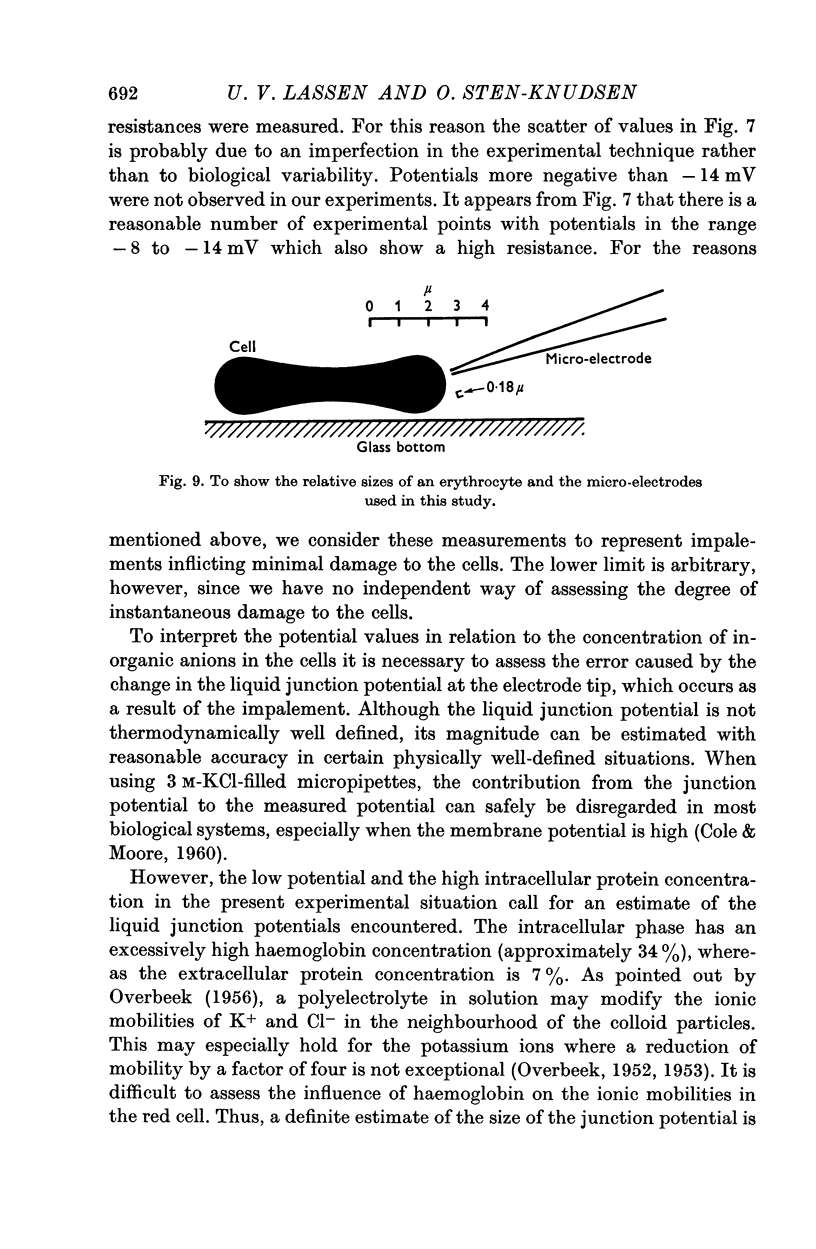
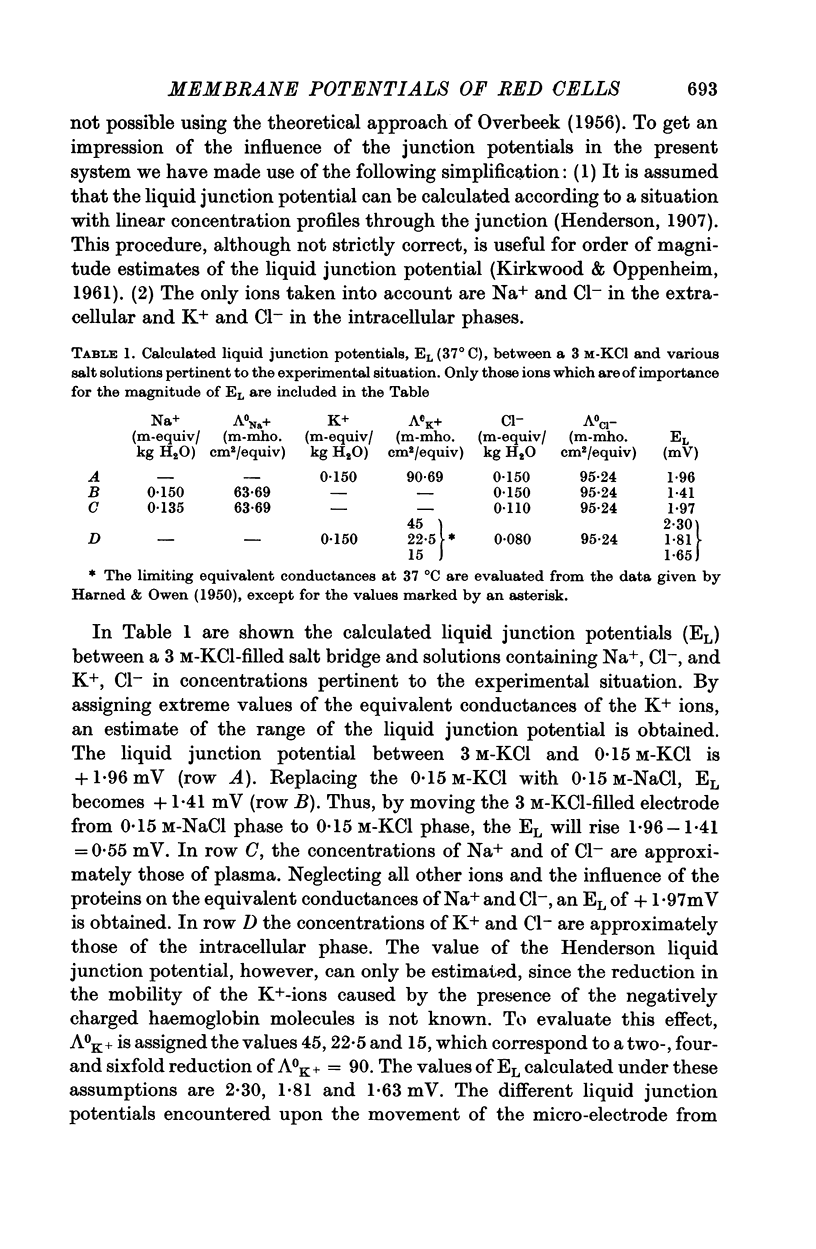
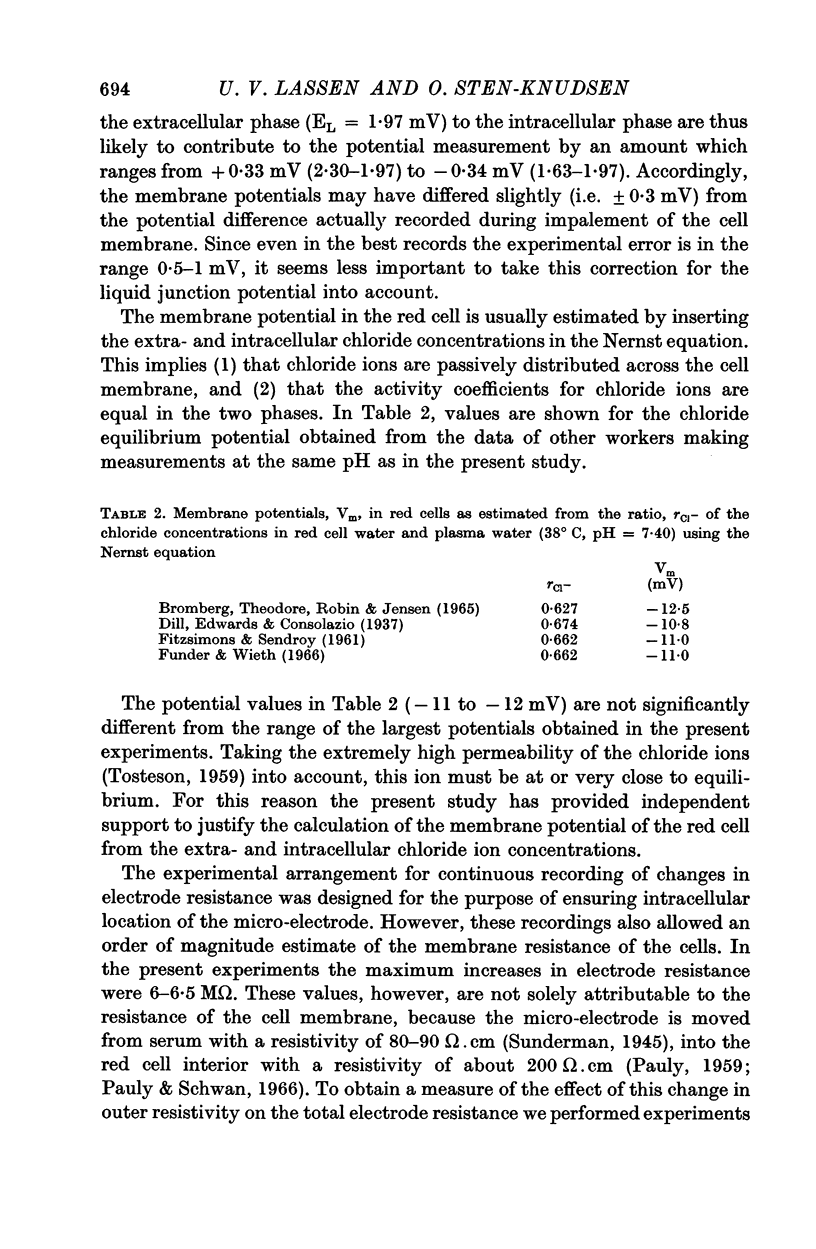
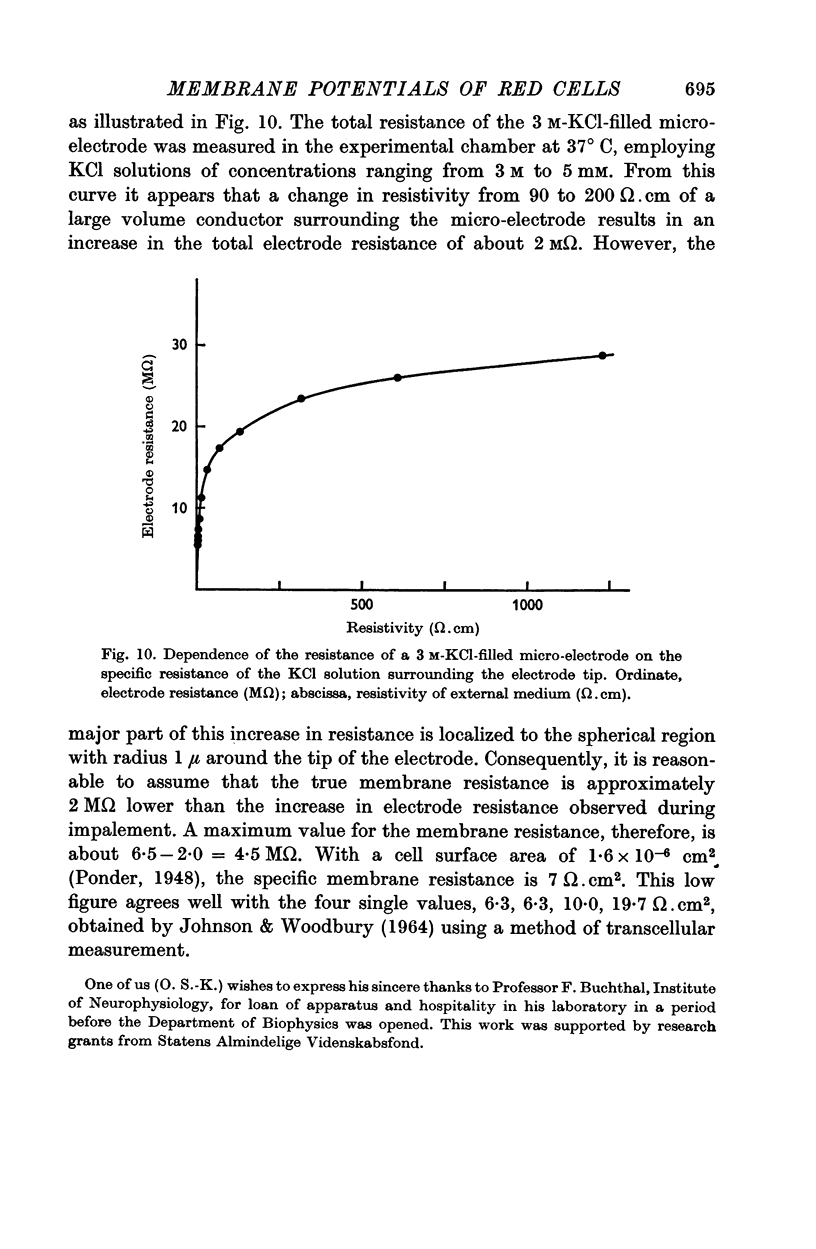
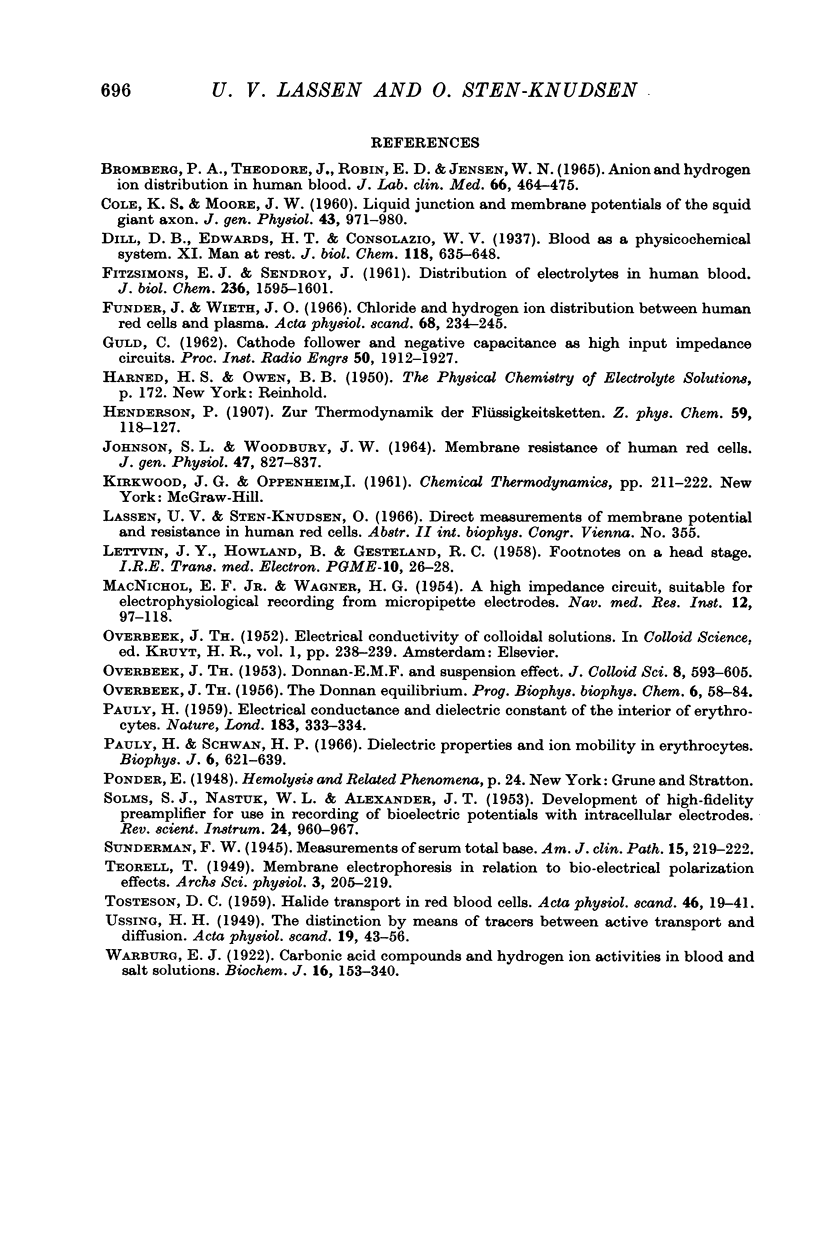
Selected References
These references are in PubMed. This may not be the complete list of references from this article.
- Bromberg P. A., Theodore J., Robin E. D., Jensen W. N. Anion and hydrogen ion distribution in human blood. J Lab Clin Med. 1965 Sep;66(3):464–475. [PubMed] [Google Scholar]
- COLE K. S., MOORE J. W. Liquid junction and membrane potentials of the squid giant axon. J Gen Physiol. 1960 May;43:971–980. doi: 10.1085/jgp.43.5.971. [DOI] [PMC free article] [PubMed] [Google Scholar]
- JOHNSON S. L., WOODBURY J. W. MEMBRANE RESISTANCE OF HUMAN RED CELLS. J Gen Physiol. 1964 May;47:827–837. doi: 10.1085/jgp.47.5.827. [DOI] [PMC free article] [PubMed] [Google Scholar]
- PAULY H. Electrical conductance and dielectric constant of the interior of erythrocytes. Nature. 1959 Jan 31;183(4657):333–334. doi: 10.1038/183333a0. [DOI] [PubMed] [Google Scholar]
- Pauly H., Schwan H. P. Dielectric properties and ion mobility in erythrocytes. Biophys J. 1966 Sep;6(5):621–639. doi: 10.1016/S0006-3495(66)86682-1. [DOI] [PMC free article] [PubMed] [Google Scholar]
- Warburg E. J. Studies on Carbonic Acid Compounds and Hydrogen Ion Activities in Blood and Salt Solutions. A Contribution to the Theory of the Equation of Lawrence J. Henderson and K. A. Hasselbach: CHAP. XII. Biochem J. 1922;16(2):307–340. doi: 10.1042/bj0160307. [DOI] [PMC free article] [PubMed] [Google Scholar]


